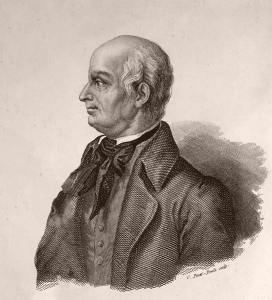Spallanzani, Lazzaro

Lazzaro Spallanzani (Scandiano, 12th of January 1729 – Pavia, 11th of February 1799) entered the clergy at age eight. He studied Rhetoric and Philosophy at the Jesuits college in Reggio Emilia and Natural philosophy, Mathematics, Greek, French, Astronomy and Law at the University of Bologna.
His academic career started in 1757 as professor of Physics and Mathematics at the University of Reggio (only instituted five years prior at Francesco III d’Este’s will) and as Greek teacher at the seminary. In 1763 he also started teaching Philosophy at the University of Modena.
In Modena, he quickly gained for himself some European recognition by extending his interests to naturalist studies.
He arrived in Pavia in 1769, where he taught Natural History and directed the Natural History Museum till his death.
His scientific fame is mostly linked to discoveries and achievements in life sciences, such as the refuting of the ancient doctrine of spontaneous generation (which stated that life is born spontaneously off of inanimate matter), the realization of the first artificial insemination of amphibians and the studies on animal regenerations, breathing and echolocation (the ability to navigate dark environments by using ultrasounds).
Giuseppe Frank wrote of him:
No room was big enough to contain his numerous students. Sitting at his desk, hat on his head, he declaimed his lessons with a preacher’s fervour, his voice modulated in bizarre manners. At times his voice would roar like thunder, other times one could barely make out what he was whispering […]. His motions were unusual, as well. He would bang his hands furiously on the desk, or speak so tenderly, as if to embrace his audience. Not without reason, he was nicknamed the ‘Buffon d’Italie’ [ndr. the buffoon from Italy]
Recommended reading:
Paolo Mazzarello, Costantinopoli 1786: la congiura e la beffa. L’intrigo Spallanzani, Torino, 2004.
